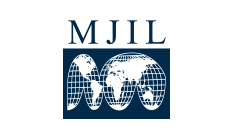Asylum-Seekers are Not Bananas Either: Limitations on Transferring Asylum-Seekers to Third Countries
Abstract
Despite the similarities between the movement of people and the movement of goods, many developed nations have maintained high barriers to migration even as barriers to trade have fallen sharply. However, as Jennifer Gordon points out, both bilateral and multilateral treaties governing migration have proliferated within this weaker global patchwork of regulation. For example, the ability of developed states to gain concessions on other matters such as trade or investment has led to the proliferation multilateral agreements, while bilateral agreements have arisen due to a desire to refrain from integrating migrant workers in destination states.
This paper focuses on a particular subset of migrants—asylum-seekers— and aims to explain why they should not be treated like bananas, so to speak. Their rights, status, and protection, as well as their transfer from destination countries to third countries, are regulated by multilateral, regional, and bilateral agreements that simultaneously highlight the differences between goods and asylum-seekers while also treating them, in some ways, like objects or commodities. The “banananization” of persons through third-country agreements is a result of these agreements’ strong focus on the sovereign interests of destination and third countries instead of on the effects of the transfer on asylum-seekers and refugees.
This paper argues that transfer agreements should require an individualized assessment of the connections between asylum-seekers and the destination country and refrain from removing individuals from places where they have relationships and connections to countries where they have significantly fewer networks or none at all. The legal validity of third country agreements should, therefore, be examined through two questions: First, the extent to which the transfer agreement supports (or impedes) the asylum-seeker’s autonomy in choosing a state that would grant them surrogate protection; and second, the degree to which relational considerations are given adequate weight prior to the transfer by taking into account global movements and by placing the asylum-seeker in a place where her meaningful relationships would be preserved.
This article undertakes this task and concludes with recommendations for the implementation of future third-country transfer agreements.
Recommended Citation
Tally Kritzman-Amir,
Asylum-Seekers are Not Bananas Either: Limitations on Transferring Asylum-Seekers to Third Countries,
43
Mich. J. Int'l L.
699
(2022).
Available at:
https://repository.law.umich.edu/mjil/vol43/iss3/6

